Text
Fic Plotting 101: How I Start from an Idea.
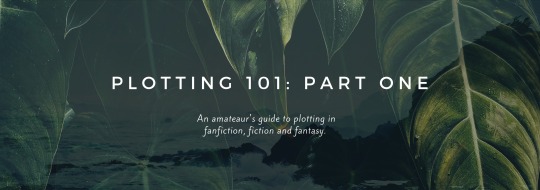
Hullo, hi, welcome! It’s Plotting 101 with Dee: Part One!
Before we get started, here’s why I made this post:
1) I get a lot of CCs asking how to approach plotting, pacing and especially story flow, and I wanted to link them all to something useful,
2) I see a lot of people wanting to write plot but unsure how to approach it because it can be overwhelming,
3) Google Searching ‘how to plot’ can be EXTREMELY scary.
Let’s take Number 3 first. If you’re going to Google ‘how to plot’, you’re going to end up with advice on everything ranging from ‘don’t plot’ to six sheet spreadsheets with fifty columns each that wants you to put down everything from your character’s eye color to what exactly they think of instant noodles. You’ll end up with diagrams, beat sheets, templates, storyboards, and find guides that range from six-step plotting techniques to fifty-steps. And I’m not saying you shouldn’t follow that method - sometimes, if you’re a person who likes character design and questionnaires a lot, you’ll love that method. But I’m not like that, and a lot of writers I know aren’t like that either. There’s nothing I hate more than some spreadsheet asking me my character’s weight and height. And if you go down that road, chances are that you’ll just go down the rabbit hole of intricately designing your characters and settings for AGES instead of actually writing anything at all.
So - if not through spreadsheets or beat-sheets, how DO you plot?
If you ask me, the best plotting method is to do WHAT WORKS FOR YOU.
How do you find what works for you? You try things. I tried many different ways of plotting before I decided what worked for me. So this is going to be less a guide on how to plot and more an explanation of the ways I plot, with the hope that maybe you can find something in here to help you.
> For me, step ONE is the IDEA.
This is your big shiny nugget. Your driving force. This is EXTREMELY important, because no one idea is equal to another. Some ideas are better, because they can help you do something unique, something only you can do, which makes you stand out. For the sake of demonstrating this whole thing, let’s take The Tender History of Tides. Tender History lived on my Ideas folder in my Notes app for months before I began writing it. This was my one-line quick jot-down: ‘what if I wrote non-royalty historical fantasy set in Joseon Korea?’
Done before? Yeah. Can be done in a unique way? Heck yeah.
Your idea is very very important because it’s the axis on which you’ll pivot your entire plot. It’ll grow and develop and change if you just give it some thought.
So, plotting suggestion #1 right here: Keep an Ideas folder. You WILL forget your idea, however shiny it is. Keeping it all in one place helps in more than one way: 1) You know it won’t disappear from your mind, 2) Sometimes ideas can overlap, come together, and turn into a whole new story.
For Tender History, the historical fantasy set in Joseon Korea idea very, very quickly merged with another idea I’d had: taegi dark-fic with sea-monster Tae and monster-hunter Yoongi. They were disparate thoughts, things I thought of at different times, things I then put together to create something more unique than what they would have been individually.
I often generate ideas this way. I’ll consult my Ideas folder for thoughts I’ve had in the past, then see if they can be combined with something else to make a better shiny.
Few examples:
1) vhope magic shop au + but what if the whole thing is set in a game arcade?
2) taegi vampire au + but what if this was set in the fashion world?
3) vmin library au + but what if they went to a magical school?
Combination is one way of idea generation. Other ways of idea generation that I sometimes use:
> Use images. Go on Pinterest, check out some aesthetics, let your imagination run wild.
> Use online prompters. There are so many prompt generators floating around! For Fantasy, I use Seventh Sanctum sometimes (they have hundreds of different sort of prompt generators, and some are really good if you’re stuck on banal things like naming, or a quick character design). For fan fiction, there are prompt bots on Twitter. You can even google writing prompts, there are several websites that offer one per day, which you can then use to kick start your imagination.
> Now you have your idea. Step TWO, for me, is developing the idea.
This is the step where you can really stand out in the crowd when it comes to plotting. It’s great having a unique idea, but this is the part where you flesh it out.
Here’s how I do that:
> Scribble down a skeleton of what you think the story will be: In my case, for this Taegi fic, the skeleton looked something like this:
taegi, yoongi is a detective, tae is a supernatural being of some sort, setting is joseon korea, time period is (???), wintry, monsters and murders, dark, atmospheric, there’s a romance and it’s both soft and dangerous, side: noble seokjin, scholar namjoon, doctor jimin (?). they’re in a village and there are these murders and everyone is keeping secrets.
This, as you see, is a ramble. It’s just whatever’s in my head, being committed to paper. Now, plotting is WORK. Putting what’s up there - that ramble, that mess of ideas - into a functioning, well-paced, structured, organized plot requires you to put work into it. It’s not easy. But it’s a lot of fun. And when it starts coming together, you really feel very good about your writing and your story!
So, moving on to the actual work now:
> Write a 250 word pitch of the story. Organize your ramble into something coherent, meaningful and easy to absorb. Imagine that this is exactly like the back blurb on a book. The back blurb on a book is meant to entice you to read it. IF it’s enticing enough for you to read, then you can imagine that it might be enticing to a reader. But first - you have to make it enticing for YOU. As the writer, YOU have to feel like, ok, this is gonna be a killer story if I tackle it.
The objective of this pitch is two-fold:
1) You have to be able to tell three things from it: the idea, the characters, and the main conflict.
2) A complete STRANGER - i.e., someone who has no idea about your story - should be able to look at this pitch and tell what exactly the story is about.
I can’t stress the importance of this step. Often times, it’s not until you force yourself to explain your plot in 250 words that you find possible issues with it.
Here’s how I explained Tender History in 250 words or less:
“In late 1700s Joseon Korea, a string of strange murders sends Inspector Kim Seokjin to a frozen northern province. Accompanying him is Min Yoongi, once a scholar of the supernatural, now an indentured laborer until a debt for his crimes against the palace can be paid. Quickly taking on eccentric artist Kim Taehyung as his assistant, Yoongi sets out to find the monster that’s terrorizing the land. But there’s more to both the icy lakes and the people here. More to Taehyung and his unflinching ease at drawing scenes of death. Yoongi just needs to figure out what.”
Note a couple of things here.
A) You as the writer knows who the important characters are, because they are named.
B) You know the setting: 1700s, Joseon Korea, icy, winter.
C) You know the characterization and how they play into this world: inspector Seokjin, indentured worker Yoongi, artist Taehyung.
D) You know the conflict: murders, monsters, secrets.
E) You ALSO, if you look deeply enough, know the inner character conflict - Yoongi has debts, he has no free will until he pays them.
If I show this to you, a stranger, you should ALSO be able to glean these basic details from this 250 word pitch.
It’s not easy. It just looks easy. I spent hours putting this down in a way that was completely right: precise, simple, yet very explanatory. This pitch will force you to confront what is the story, its actual plot and actual characters, and what is only set dressing. You can’t ramble about it anymore for hours. You can’t have a bunch of disconnected ideas anymore. You HAVE to fit it into something concise, something easily absorbed - not just by you, but by a reader who can’t see into your mind.
You will also know, by putting this down, if the characters aren’t developed enough inside your head. Because why would anyone go to a wintry frozen land to catch a monster? You can’t answer that unless you know, by forcing your thoughts into coherency, that oh, Yoongi has no real free-will here.
> Step THREE, marry external and internal conflict.
Or this is step 1.5, actually. You cannot plot a story without both external and internal conflict. Or, you can, but then you won’t touch your readers as much as you would want to.
What do I mean by this?
Your external conflict is something that exists outside of your characters - your regular villain, say. This is your Darth Vader, your Voldemort, your Capitol.
Your internal conflict is what your character feels. This is HARDER. In Hunger Games, Katniss ponders and combats her own ruthlessness. In Harry Potter, Harry’s desire to fit into the world and live a normal life continuously contrasts with his own fame and the symbol of hope he becomes.
In Tender History, my external conflict is very fancy: murder, monsters, scary villages, etc. Internal conflict is a lot less so: Yoongi in this fic continuously has to wrestle with feelings of guilt and unfairness, with wanting to do good but feeling too burned by the system. If you’ve read Murmuration, the external conflict is the Scarab, but the internal conflict is their own ambition, their guilt over what they had to do to survive, their (terrifying) loyalty to each other.
Internal conflict is where you find your character voice. If I’d set Tender History Yoongi in a celebrated position at his job, he’d be a much different character. His voice would be much different. He has power! He has resources! Versus this Yoongi, who has nothing, and hence has to trust the people he’s allowed to work with to tell him the truth.
Think of it like peeling the layers:
1) The Idea,
2) Develop the Idea,
3) Fill in the External Conflict,
4) Fill in the Internal Conflict.
I have a few major rules I follow at this point of plotting. They’re like this:
1) Are these the right characters for my story? - This means I do a round of thinking about whether these people are the perfect vehicle to tell this story I want to tell. Great, I want to tell a story about wintry Joseon Korea, and monster-fighting. But. Is indentured-worker Yoongi the best person to carry this? What if I make him a village leader instead? What if he’s a runaway prince? What if he’s the monster? Depending on what you want your story to be, you have to think of your character to fit the telling. In Romance of Old Clothes, I chose Tae POV for the whole thing because I wanted to illustrate his reading of people vs. other people’s reading of him. Taehyung’s internal conflict in that fic was that he lies to himself extensively. He’s got this idea of who he is, which is untrue, which is then broken down in a climactic moment. He’s my perfect character to tell that story, because of his obliviousness. Similarly, in Tender History, Yoongi’s the perfect character to tell this story, because of who he is in society, his internal troubles, and his monster-hunting experience.
2)What are some details I would add to this world? - I have a basic idea of the conflict, the world, and the characters now. This is where I take out a chart or a notebook and get to work. I do this like a mindmap: I jot down anything I can think of - say, okay, Joseon Korea: food, art, paintings, caste system, civil examinations, scholars, winter, roads, Confucianism, shrines, religion, music, monsters, gender roles. Then I begin detailing it. ‘Food’ for example: royals eat different food from commoners eat different food from untouchable castes or peasants. Summer food is different from spring food is different from winter food. When I read about food for this fic, I read about the ‘barley gap’ or the gap between barley and rice cultivation during winter. People historically starved during this time. If my story is set in winter, this is an important detail.
Let’s take something more contemporary. I’m writing about a vintage clothes store. Details I would need - clothes, brands, size of the shop, layout of the shop, how do they procure clothes, how do they test authenticity, what are their customers like, who do they interact with, where is their shop in the city, what does being in that locality mean, what seasons are busy for them.
A mindmap is just a page full of words, questions, things you know, things you don’t know. Filling it up is the next major step.
3) What is character development going to be? - This is very important. Okay, you have an external and internal conflict. Now, start of the story being point A, and end being point B, what exactly is A and B for my character? What do I want them to become? In Romance of Old Clothes, Taehyung at Point A is lying to himself about his own nature. By Point B, he’s able to identify that he needs to let people in, open up more. In Wonder Woman, Diana at the beginning of the story is rather naive, believing that if only she could destroy the God of War, the whole war will end. By the end, she understands and admits that things are not that black and white - that people sometimes fight wars because they want to, not due to some external influence.
You have to know this to continue.
Step 4, in how I plot, is to put down a starting scene, a few story beats, and the rough idea of an ending.
But I’ll get into that - and more, including pacing - in Series 2 of this series of posts! Please let me know here or on twitter if these are helpful, or if I’m just rambling too much.
Since I am now struggling a lot to balance writing with work, and if you want to help me keep on writing posts like this, please consider donating to my ko-fi.
I also made a post on how I world-build, the tools and templates I use for the same: it’s over here!
https://tender-history.tumblr.com/post/185910085044/on-research-worldbuilding-and-culture
61 notes
·
View notes
Text
Chapter 1: Some History Stuff
C> Posting this before I put chapter 2 out: some cool history that I didn’t fully discuss in chapter 1!
While I’m a huge history nerd, not everyone reading historical fiction is. And anyway, this is fanfiction, not a thesis, so I left out a bunch of cool things I found.
Here they are, quickly!
1) Indenturement: indentured workers got that way because of two reasons. Either they committed a crime that put a big debt on them (like Yoongi in this fic), or they chose indenturement sometimes because of poverty. This system was kind of complex in Korea. Without getting into too many details, unlike black slavery, indentured laborers were paid wages, could hold land, have their own indentured workers, and even received maternity and paternity leave. A lot of them were trapped in the system because of what they owed to the government, but the rules were different.
2) Untouchability: the Korean untouchable caste were mostly comprised of people in menial professions — butchers, basket makers, acrobats, folk performers etc. They were mostly nomadic, which helped in their often becoming disenfranchised and being blamed for thefts, crime or murder. They were the lowest class of people in both the Goryeo and Joseon dynasties, and often faced discrimination. [This is especially interesting because this caste system was a direct impact of Buddhism being introduced in Korea during Goguryeo/Silla/Baekje era- did the ‘purity’ politics of it come from the place of origin of Buddhism, India?] Again, however, unlike India, around the time period that this story is set in, the baekjeong were allowed to hold land, but discrimination from other groups continued to torment them.
3) Yongchon: I don’t really think there was a district called Yongchon back in the Joseon era - I chose that name because in present day, that’s an area that’s close to the Yalu River in North Korea. As the coldest region in the Korean peninsula, it serves my purpose. That was also a land that was frequently invaded by China (it shares a border) and by Jurchen tribes, so it made sense for me to set it there considering I wanted a village with a strong military presence. In the present day, this region would be in N.Korea.
4) Winter and food: the gap between cultivation in rice and barley is punctuated by horrid winters, and people usually starved in this period. In extreme cases, they ate dug up tree roots to survive. In addition to high taxes, all of this led to a bunch of peasant revolts in the later Joseon period, such as this famous one that laid ground for the end of the dynasty as a whole > Donghak Peasant Revolution
5) the podocheong: they had detectives, they had undercover spies, they had code language and women employees! The podocheong kept a register of indentured female workers so they could be used to investigate in more residential areas where men—especially higher-class men—wouldn’t go. If you wanted to be a lady in the podocheong, you had to be able to drink your weight in makgeolli. That was an actual rule.
6) seonbi: while scholars were learned and respected, those that chose not to occupy governmental positions but act in service of the public often found themselves persecuted by royalty. In this fic, Namjoon is a virtuous scholar, working in service of the common folk. In many instances in Joseon Korea, seonbi submitted blunt petitions to force the king into reducing taxes or giving back wealth to the public. This led to the scholars being purged and pursued by those in service to the king. The seonbi are glorified by the public, but reviled by those in power—which makes sense considering how popular dramas with them are :D
7) inks and paints: making Tae an artist in this fic came with its own body of research—I’ll talk about this later, but I wanted to show you what an inkstick is! It was a stick made of soot, colored pigments, animal glue, and some other sometimes medicinal materials that had to be ground into an inkstone to create ink for painting/calligraphy. Colored inksticks look like this:
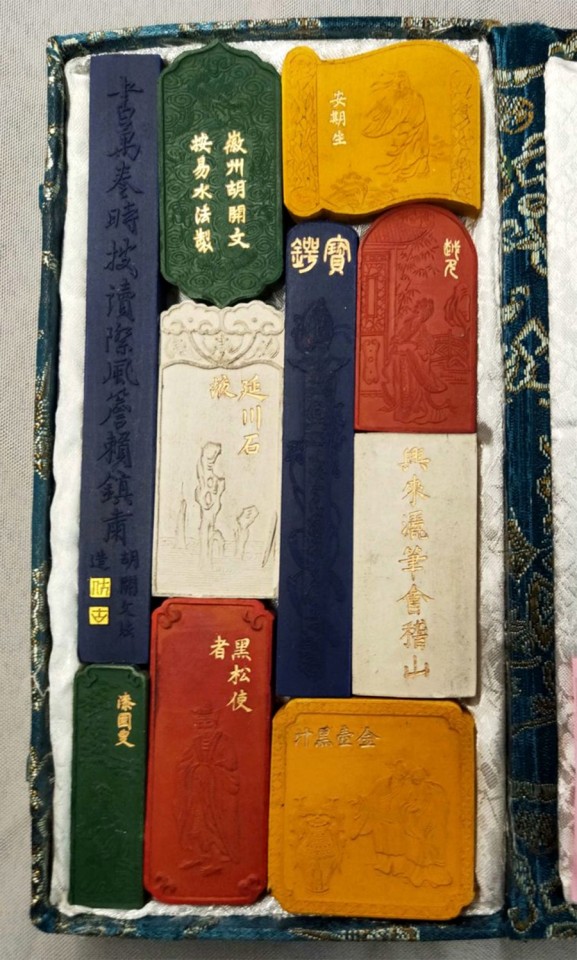
Okay, history lesson over. Please let me know if these are fun/helpful to you, or if you want me to address anything else in terms of writing process or research ^^ I’m really enjoying diving into lesser known history for this whole thing!!!
> Link to the fic
Editing to add:
my sources are mostly from Google Books but I referred a lot to Cornelius Osgood’s writings, especially his book “Koreans and their Culture”, which is recommended reading by the National Museum of Korea.
41 notes
·
View notes
Note
hey the 'ao3 link' on the blog actually links to the characters page! also a question - where do you find all your sources? is it hard to find information about societies hundreds of years ago?
Argh I'm going to fix that. Tumblr drives me mad. (It might be breaking coz it's on the app, I really don't know why it does that)
As for sources, I usually Google, read up on Wikipedia, and then check Wiki references to find more books/articles on the subject. For example, searching for "Joseon era Korean art" brings me to Korean art materials (inksticks) which brings me to "meok" artisans (artisans who make inksticks) which I can then deep dive into on Wiki/Google Books to learn more. Google Books is a WEALTH of information - you can get chapters on everything from dyeing and textile process to food/festivals and pottery making. Also, if you know the right words from your googling (such as "meok" in this instance) you'll find translated newspaper articles, videos and more. There's a ton of information out there. It's just that you have to be patient to find it!
7 notes
·
View notes
Text
On Research: Worldbuilding and Culture
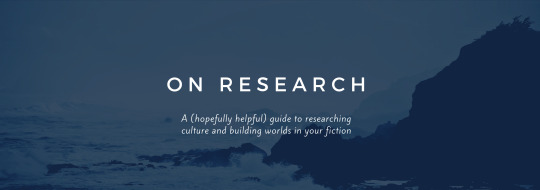
Hullo, in this post I’m going to talk about how I research and do world-building for my stories!
I’m doing this through the following ways:
1) using chapter 1 of my historical Taegi fic to illustrate what I did to research the era and the culture for that period,
2) providing the templates and tools I used in the hopes that it can help some of you all writers if you ever want to write your own research-intensive stories or original fiction that requires world-building!
While I’m using my BTS Taegi fic as a means to explain my process, this post is for any sort of writing project - original or fanfiction. If you follow me for fic, though, there will be chapter 1 spoilers for it. So if you haven’t read that yet, be-warned that there be spoilers below!
> How I do my research/world-building:
If your idea for the actual story is agnostic of time-period or setting, identifying that is possibly the first step. My initial idea for this story was to have it take place during a war (the Imjin War between Japan and in 1590s was the first choice) but finding the spooky landscape to set it against while also maintaining the drama and tension of a battlefield was going to dilute the characters and their inner conflicts.
So I went back to reading about Korean history in broad terms (Google Books is your friend) , trying to locate a time-period to set my story in. I finally chose this time-period because it was very interesting to me in multiple ways.
- it’s still a way away from the big social reforms in Korea in the 1800s that would push it into the Modern Period of history
- it was a time period when common people and peasants began to lose trust in the king and the upper-class bureaucracy, leading to peasant rebellions and some villages stockpiling their own grains
- it is a time when global influences were beginning to creep into Korean society, including Christianity. In fact, just a few years from this, a major wave of persecution would be unleashed against Catholics in Korea.
- I chose this time-period also because I wanted the level of organization of society that’s in this fic. It’s been established already, which means the characters are at a point of history where things are more or less stable in terms of what is expected of them as a member of this society. I needed that stability to create a quieter sort of period mystery.
To research for this story (or any other), once I pick the time period, I start looking for answers to my biggest questions:
1) how did they live: this includes food, travel, interests, societal hierarchy and organization, family structure, music, religions, and mythology. Basically, anything that they shared as a cultural group. In doing this, I had to separate royalty from common folk, because so much history is written about the royals and there’s so less about the folk. I looked up everything from the food that the common people ate to the issues they faced (winter and the gap between rice and barley cultivation was a huge aspect; so huge, in fact, that the popularity of kimchi can be attributed to needing a protein source in the winter that wouldn’t go bad). I looked up clothes and fabrics and the layout of villages. I looked for traditional crafts. And when I did, I found myself going down rabbit holes about caste professions (the shaman, for example, is of low caste in Joseon society, which was surprising to me considering so many period fics I’ve read has depicted them in a different fashion.)
I know that this feels very disorganized and random, but that’s because I have been doing world-building—both fantasy and historical—for a long time, and my process is built basis what I’ve historically realized works for me. But to make this post more useful, I’ve figured out a template that helps to look into culture. I used to use this to build original fantasy worlds, and I think it is useful.
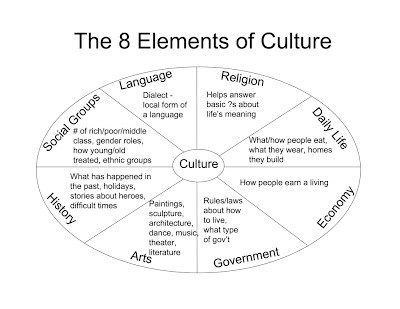
And here is a graphic where someone has analyzed Japanese culture through this lens:
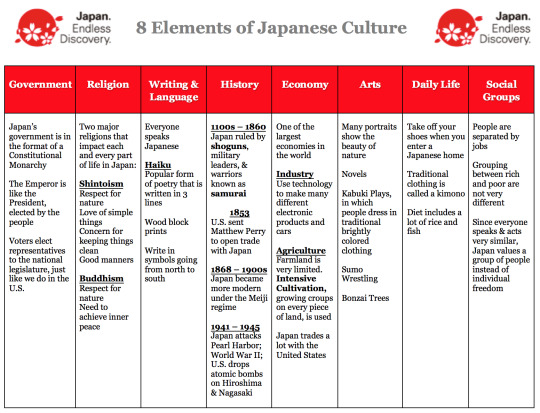
Most cultures share elements of commonality. You can use this graphic above to figure out how to research. For example, the culture of Joseon Korea as I have tried to research for this fic comprises of:
1) Language (written and spoken - so Korean; Hangul, + Chinese characters);
2) Religion (shamanism + neo-confucianism)
3) Government (caste system + agrarian bureaucracy + royalty) etc.
You can fill in the blanks this way for any time period and thus get a better understanding of the culture you’re writing about.
Additionally, I’ve spoken about the cultural iceberg on twitter before, but I find it very useful when I’m researching to pick up on each element in it and look up information pertaining to them.
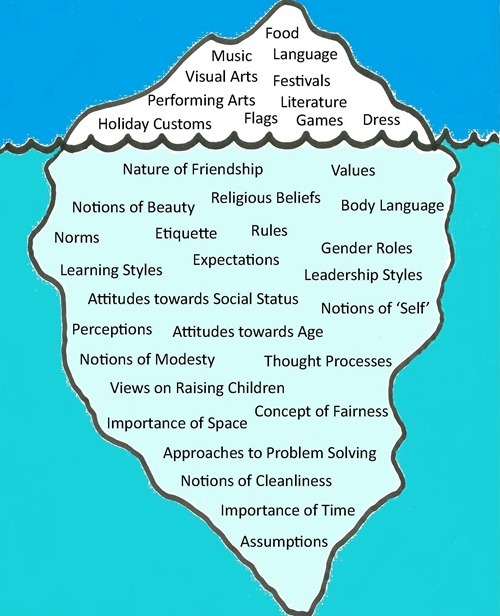
This is how I use the iceberg:
> the top portion is usually the things that we’ve picked up on, through Run episodes or general Bangtan stuff. Like, we know hanbok is Korean traditional dress. We know the kind of food they eat. We know the music scene in SK, and that the major festivals are seollal and choseok.
> the bottom portion is where you gain deeper intercultural understanding. Notions of modesty, for example. We know that gender roles in Korea are more entrenched than they are in the west. In this fic, men are the ones mostly occupying spheres of influence, but women have their own spheres—we’ll get to that in a while. If you see, there’s an aspect called ‘nature of friendship’. This is where the concept of hyung-line/maknae-line/same-age friends all fit into this culture. It’s less visible than the top half, but you can still gain knowledge of it. Similarly, ‘attitude towards elders’ or ‘concepts of beauty’ are both aspects of culture. These are keywords you can use to learn more about culture. Again, you can also use this in original writing projects to build your fantasy world. I know I do :)
Now that I know how my characters live, I come to the second stage of planning/world-building:
2) where in society are my characters: since I’m writing a mystery, I need someone who wants to solve it. I need detectives. I read up on everything I could about the Joseon lawmaking process, going through scholars and bureaucrats and ministers before I found a smaller, quieter force: the podocheong. I also need medics, people in charge of administration, senior officials, and so forth. For each of this, I tried to look into how my character could have entered that role, what that role comprises of, and where it puts them in that society. Seokjin, because he is a senior official, would require to have taken a test to enter into that force. His family would have to be of a particular class status to even enable him to take it. Knowing this, I looked up everything I could about the gwageo because I found it so fascinating! There were whole coaching centers dedicated to just teaching children of upper-class bureaucrats so they could pass the gwageo! If you belonged to an upper-class yangban family, and you didn’t pass the gwageo for four generations, your titles could be stripped from you. This is another nugget of information that I thought would be an interesting premise for a character being a in a particular conundrum—you’ll see that later in the story.
For Taehyung, being an artist in that age would have come with interesting baggage. Calligraphers and painters were usually higher-class folk. Peasants simply did not have the time or the materials to pursue art. But there are outliers—inkstick craftsmen, for example, are among what was considered the ‘vulgar common caste’ but they were the ones who made ink and color pigments.
This just helps me create a richer world than I would have without putting in this research. It also makes your world seem more cohesive, lived-in, and deep.
So now that I know how they live and who they are, we come to:
3) what are my external/internal conflicts: my characters behave the way they do because of the culture and the customs of the time period. My external conflict—the murders—have to be set against a background of this, and informed by this. So I chose to make Yoongi a sort of disgraced scholar because it allows him to operate outside of his station: he needs to talk to Taehyung, or villagers for example who are all beneath his station, and he wouldn’t be able to do that to the same effect if he is a regular scholar like Jin is. The culture simply won’t allow him to. That also leads to friction between yoonjin, and secrets once they start appearing. His current station helps him integrate better into Tae’s world, while removing him from the world he’s working for. It also serves for his internal conflict, fears and grief.
Now if I were to extend this example to a more contemporary story: say your characters are in modern Seoul. Your external/internal conflicts can still be tied into the culture. Expectation on children to look after their aging parents OR the character’s family values vs. individual outlook OR Korea’s culture of students studying late into the night vs. the slowing job industry etc. For a Jinkook fake-dating AU, say, consider what are the troubles that Jin and Jungkook, who have 5 years between them, individually face. 27 year old Jin’s place in society, social spheres and worries will be very different from just-out-of-college Jungkook’s.
Why does any of this matter?
I just think putting in some effort to understand culture makes for richer characters, a richer world, and better writing. Not to mention it lets you learn about a new culture, which I think is fascinating, especially if you spend so much of your time thinking/talking about 7 Korean boys.
So to summarize— I guess this is how I research/worldbuild:
1) Find out when and where
2) Find out who, and how that character is affected by the customs/culture of that era/setting
3) tie my external/internal conflicts back to the era/setting so that the world feels truly lived in and alive.
For truly good world-building, make sure that your conflicts are caused by limitations imposed on a character due to their cultural setting, or because whatever is happening is outside of their comfort zone. Human beings don’t live in a vacuum. The society and the values that we grow up in affects everything we do, every decision we make. Even rebelling against that culture is an aspect influenced by that culture. Your world (fantasy or otherwise) will feel way less flat if it follows the rules of actual cultures world over.
*mic-drop*
If you found this post useful as a resource for writing/world-building, please consider a small ko-fi donation!
[PS: Clarifying that I will not be taking ko-fi for the fic itself - only for the original content that I provide here, on this blog, which can be used for fanfiction or original world-building.]
72 notes
·
View notes
Text
The Tender History of Tides (Taegi fic, Chapter 1/5)
Summary: In 1700s Joseon Korea, ex-scholar Min Yoongi is sent to a frozen village to catch a terrifying supernatural killer. There he meets artist Taehyung, who seems like he could be both victim and culprit.
AO3 link
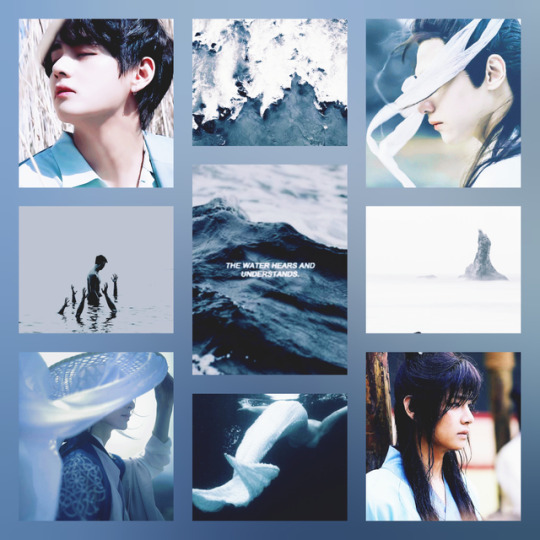

#Taegi#taegi fic#taegi au#Bts fanfic#bts fic#yoongi x taehyung#Historical Fantasy#Supernatural Mystery#bts fanfiction
28 notes
·
View notes
Text
:)

hullo! i started this blog because i want to talk about my Taegi Joseon Era fic, but i ALSO want to talk about history - specifically Asian history - as well ass writing, research, and outlining!
i love Asian history. if you’ve ever visited a museum on Asian history, you’ll be SHOCKED to see just how less the world knows about it. we’re all so conditioned to see the world from a more Western POV, and so much of Asian history has been erased through colonial occupation and western hegemony. if you went to school/worked in an Asian country you’ll know that even our history books are so tailored to a ‘global’ POV.
but there really is so much out there! there was just an astounding amount of importance for scholarship and learning in medieval and early modern Asia. there were printed books and identity cards and civil service examinations and a devotion to nature/family all leading to a level of organization in society so entirely different from the West. it really fascinates me.
as a student of early-modern Asian history, i wanted to write this story because i wanted to dabble in a few specific things:
> a mystery with a period setting
> a period fic where the characters are NOT royalty
> something intrinsically korean, because i want to learn more
it took me a lot of reading to find a place and a time i wanted to delve into. in the process, i read about the dynasties of korea, the spread of buddhism and confucianism and neo-confucianism, the wars and treaties with china/mongolia/japan, trade, and society. i started out wanting to write a supernatural mystery set during a war and then decided that it needed to be a quieter story. i started out planning for yoongi’s character as a scholar, and then read deeper and figured out that i wanted him removed from a position of power.
(this was kind of my first attempt to figure this story out)

that’s not at all what it is now.
this fic took a REALLY long time to gestate, went through multiple iterations, and is my first ever attempt at a historical setting. that’s why i want to talk about the making of it.
i found the idea of the podocheong as a footnote in one of the articles i read about the joseon era. i found it so incredibly fascinating! a police force, detectives, spies and lady helpers! you don’t think of that often when you think of asia’s past, do you? that’s how i started trying to learn more about them, and how my semi-historically-accurate detectives yoonjin came to be.
while this fic is historical fantasy and therefore by nature somewhat removed from actual history, there are a lot of things happening here that are tied to real events, mirror actual uprisings, and snapshots what is (hopefully) at least a semi-well-researched depiction of the era.
this last bit is kind of a disclaimer but i just want to get it out: i know that culture is hard to get right unless you are immersed in it. i can research every hour of every day but at the end of it all i’m still an outsider, limited by language and cultural memory, looking into and writing about a culture that is not mine. while my voice isn’t korean, i hope that i’ve done my research well enough that i don’t make callous mistakes. please hit me up if i’ve made a mistake or misinterpreted something. ask box on this blog is always open, or you can talk to me on twitter!
12 notes
·
View notes
Text
about

*this blog is best viewed on desktop*
The fic:
In late 1700s Joseon Korea, a string of strange murders sends Inspector Kim Seokjin to a frozen northern province.
Accompanying him is Min Yoongi, once a scholar of the supernatural, now an indentured laborer until a debt for his crimes against the palace can be paid.
Quickly taking on eccentric artist Kim Taehyung as his assistant, Yoongi sets out to find the monster that’s terrorizing the land. But there’s more to both the icy lakes and the people here. More to Taehyung and his unflinching ease at drawing scenes of death. Yoongi just needs to figure out what.
About this blog:
I have a lot of glossary terms, interesting history, and extra scenes I want to put out for this, and ao3 didn’t seem like the best choice to keep all those things in one place.
Links:
> The fic on AO3
> Glossary of Terms
> An introductory note
> Characters
> Playlist on Spotify
> My twitter profile
12 notes
·
View notes
Text
:)

hullo! i started this blog because i want to talk about my Taegi Joseon Era fic, but i ALSO want to talk about history - specifically Asian history - as well as writing, research, and outlining!
i love Asian history. if you’ve ever visited a museum on Asian history, you’ll be SHOCKED to see just how less the world knows about it. we’re all so conditioned to see the world from a more Western POV, and so much of Asian history has been erased through colonial occupation and western hegemony. if you went to school/worked in an Asian country you’ll know that even our history books are so tailored to a ‘global’ POV.
but there really is so much out there! there was just an astounding amount of importance for scholarship and learning in medieval and early modern Asia. there were printed books and identity cards and civil service examinations and a devotion to nature/family all leading to a level of organization in society so entirely different from the West. it really fascinates me.
as a student of early-modern Asian history, i wanted to write this story because i wanted to dabble in a few specific things:
> a mystery with a period setting
> a period fic where the characters are NOT royalty
> something intrinsically korean, because i want to learn more
it took me a lot of reading to find a place and a time i wanted to delve into. in the process, i read about the dynasties of korea, the spread of buddhism and confucianism and neo-confucianism, the wars and treaties with china/mongolia/japan, trade, and society. i started out wanting to write a supernatural mystery set during a war and then decided that it needed to be a quieter story. i started out planning for yoongi’s character as a scholar, and then read deeper and figured out that i wanted him removed from a position of power.
(this was kind of my first attempt to figure this story out)

that’s not at all what it is now.
this fic took a REALLY long time to gestate, went through multiple iterations, and is my first ever attempt at a historical setting. that’s why i want to talk about the making of it.
i found the idea of the podocheong as a footnote in one of the articles i read about the joseon era. i found it so incredibly fascinating! a police force, detectives, spies and lady helpers! you don’t think of that often when you think of asia’s past, do you? that’s how i started trying to learn more about them, and how my semi-historically-accurate detectives yoonjin came to be.
while this fic is historical fantasy and therefore by nature somewhat removed from actual history, there are a lot of things happening here that are tied to real events, mirror actual uprisings, and snapshots what is (hopefully) at least a semi-well-researched depiction of the era.
this last bit is kind of a disclaimer but i just want to get it out: i know that culture is hard to get right unless you are immersed in it. i can research every hour of every day but at the end of it all i’m still an outsider, limited by language and cultural memory, looking into and writing about a culture that is not mine. while my voice isn’t korean, i hope that i’ve done my research well enough that i don’t make callous mistakes. please hit me up if i’ve made a mistake or misinterpreted something. ask box on this blog is always open, or you can talk to me on twitter!
12 notes
·
View notes